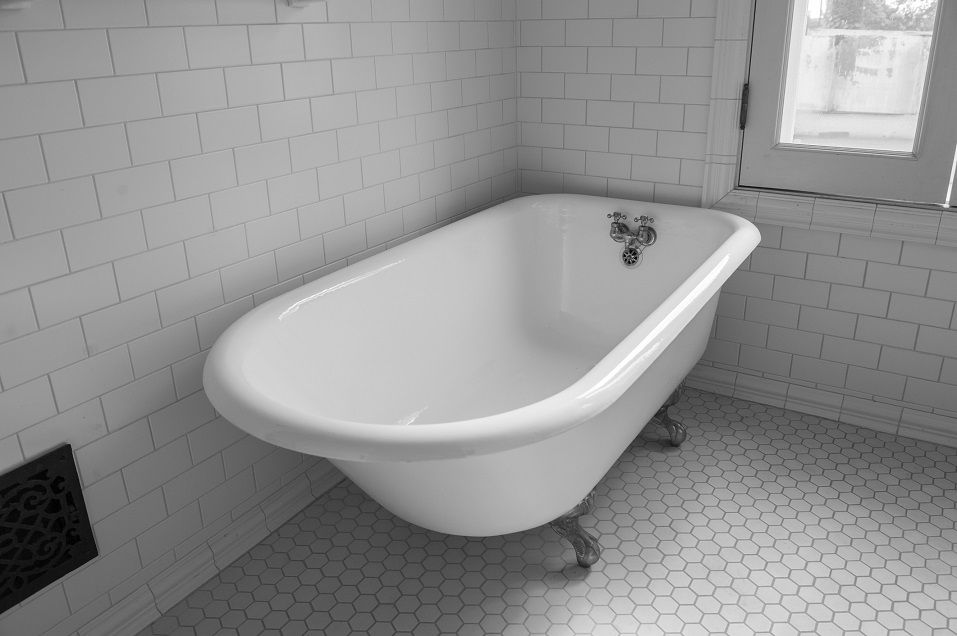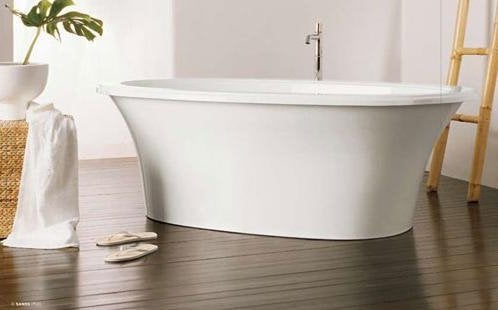Exactly How To Install A Tub (For Beginners).
Exactly How To Install A Tub (For Beginners).
Blog Article
We have noticed this great article relating to Installing A Bathtub directly below on the internet and felt it made sense to discuss it with you on this page.

Installing a bath tub isn't exactly brain surgery, yet it does need strong plumbing, carpentry, as well as often, tiling abilities. Changing an old bathtub with a new one is likewise a reasonably hard task. If the old tub is readily easily accessible, the task can relocate easily; if you need to open a wall to eliminate the old tub as well as place the brand-new bath tub, the task is much harder. In either situation, the job is within a home handyman's skills, although you will certainly require an assistant to move out the old tub as well as embeded in the new one. Ensure you have certified on your own for the work and are comfortable trying it. As opposed to hiring a professional to take over a halfway-completed job, it is far better to consider employing one before you begin. Possibilities are you might require a professional plumber to make tube connections.
This short article will certainly assist you mount a brand-new bath tub in your bathroom if you have already acquired a brand-new bathtub and don't need to change the arrangement of your previous supply of water pipes.
Your tools as well as material checklist must make up the following:
Getting ready for the Setup
First of all, the supporting framework supplied with the bath should be fitted (if required) according to the manufacturer's instructions. Next, fit the taps or mixer to the bathtub. When suitable the faucet block, it is necessary to see to it that if the faucet features a plastic washing machine, it is fitted in between the bath as well as the taps. On a plastic bath, it is also reasonable to fit a sustaining plate under the faucets system to avoid stress on the bathtub.
Fit the flexible faucet adapters to the bottom of both taps utilizing 2 nuts and olives (sometimes provided with the bathtub). Fit the plug-hole electrical outlet by smearing mastic filler round the sink outlet opening, and afterwards pass the electrical outlet with the hole in the bathroom. Utilize the nut supplied by the manufacturer to fit the plug-hole. Examine the plug-hole electrical outlet for an inlet on the side for the overflow pipeline.
Next, fit the end of the flexible overflow pipeline to the overflow outlet. Afterwards, screw the pipeline to the overflow face which ought to be fitted inside the bath. See to it you utilize all of the provided washing machines.
Link the trap to the bottom of the waste electrical outlet on the tub by winding the thread of the waste electrical outlet with silicone mastic or PTFE tape, as well as screw on the trap to the electrical outlet. Link the bottom of the overflow tube in a comparable manner.The bath should currently be ready to be fitted in its last setting.
Removing Old Touches
If you require to replace old faucets with new ones as a part of your installment, then the first thing you need to do is detach the supply of water. After doing so, activate the faucets to drain any kind of water staying in the system. The procedure of eliminating the existing taps can be rather problematic as a result of the restricted accessibility that is commonly the case.
Make use of a basin wrench (crowsfoot spanner) or a faucet tool to reverse the nut that connects the supply pipelines to the taps. Have a towel prepared for the continuing to be water that will originate from the pipes. As soon as the supply pipes have actually been eliminated, make use of the same device to loosen the nut that holds the faucets onto the bath/basin. You will require to quit the single faucets from turning throughout this process. When the faucets have been gotten rid of, the holes in the bath/basin will need to be cleaned of any type of old securing compound.
Prior to moving on to fit the brand-new faucets, compare the pipeline connections on the old taps to the brand-new taps. If the old faucets are longer than the brand-new taps, after that a shank adapter is needed for the new faucets to fit.
Installing the Tub
Making use of the two wooden boards under its feet, put the bath tub in the required setting. The wood boards are helpful in evenly spreading out the weight of the bath tub over the area of the boards rather than concentrating all the weight onto four little factors.
The following goal is to make sure that the bath tub is leveled all round. This can be achieved by inspecting the level and also adjusting the feet on the tub till the level reads level.
To set up faucets, fit the bottom of the furthest versatile faucet adapter to the appropriate supply pipe by making a compression sign up with; after that do the very same for the other tap.
Turn on the water and also check all joints as well as new pipework for leakages and also tighten them if essential. Fill the bathtub and likewise examine the overflow electrical outlet and also the normal outlet for leaks.
Lastly, take care of the bathroom paneling as defined in the supplier's user's manual. Tiling and sealing around the bathtub ought to wait up until the tub has been utilized a minimum of when as this will certainly resolve it right into its last placement.
Suitable New Touches
If the tails of the brand-new faucets are plastic, after that you will certainly require a plastic adapter to stop damages to the string. One end of the adapter fits on the plastic tail of the faucet and also the various other end gives a link to the current supply pipelines.
If you require to fit a monobloc, after that you will certainly need minimizing couplers, which links the 10mm pipe of the monobloc to the conventional 15mm supply pipe.
Next, position the tap in the placing opening in the bath/basin making certain that the washing machines are in location between the tap and the sink. Safeguard the faucet in position with the maker supplied backnut. When the tap is securely in place, the supply pipelines can be attached to the tails of the faucets. The taps can either be connected by using corrugated copper piping or with regular faucet ports. The former type should be attached to the faucet finishes first, tightening just by hand. The supply pipelines can later be connected to the other end. Tighten both ends with a spanner after both ends have been attached.
Tiling Around the Tub
In the area where the bath fulfills the floor tile, it is needed to seal the joins with a silicone rubber caulking. This is necessary as the installation can move enough to fracture a stiff seal, causing the water to pass through the wall surface between the bath and also the tiling, causing complications with wetness as well as possible leakages to the ceiling below.
You can choose from a selection of coloured sealants to blend in your components and installations. They are offered in tubes and cartridges, and also are capable of sealing voids up to a size of 3mm (1/8 inch). If you have a larger gap to load, you can fill it with spins of soaked newspaper or soft rope. Keep in mind to always load the tub with water prior to securing, to allow for the activity experienced when the tub remains in use. The sealer can break rather early if you do not take into account this activity before securing.
Alternatively, ceramic coving or quadrant floor tiles can be used to border the bath or shower tray. Plastic strips of coving, which are easy to use and also cut to dimension, are also conveniently available on the marketplace. It is recommended to fit the floor tiles using waterproof or waterproof sticky and grout.
Bathtub Installation
How Important Is A Bathtub To Your Home?
High-quality baths, showers, and other bathroom updates are necessary when considering a smart investment in your home. It’s a room that you go to every day and one that is constantly being used by guests.The bathroom is one of the top trafficked rooms in a home and also one of the most valuable in terms of home resale.
Install Piping Before Tub
You will be using your existing drain and waste vent system, but pipes required include the hot and cold water supply lines and a pipe leading to a shower head. A mixing valve and shower head are also needed. Air chambers may be required.
Position the Tub
Lower the tub into place so that the continuous flange fits against the wall studs and rests on 1’x4' or 2’x4' supports. Anchor the tub to the enclosure with nails or screws inserted through the flanges into the studs.
NOTE: Remember, bathtubs and shower stalls may require support framing. A bathtub filled with water is extremely heavy, so check building codes and framing support before installing the tub.
Assemble Drain Connections
Assemble the bathtub drain connections by connecting the tub overflow with the tub drain above the trap, not beyond it. The trap will have a compression fitting that screws over the arm of the overflow assembly.
Place a Pipe For the Shower Head
First, locate a brass female threaded winged fitting and attach it to a framing support via a screw or a nail. Then run a pipe up the wall for the shower head. Sweat or solder the other side of the brass fitting to the top of the pipe.
Attaching Hot and Cold Water Lines
Attach your water lines for both hot and cold by sweating these directly into the hot and cold ports of the mixing valve. The mixing valve will be how water enters the tub’s system, not by the pipes themselves.
Install the Spout
Extend a piece of 1/2 inch pipe, or whichever length is specified in the manufacturer’s instructions, for the tub spout. Sweat on a male threaded fitting at the end of the pipe or use a brass nipple of the proper length and a 1/2 inch cap.
NOTE: At this point you should have your rough-in plumbing work inspected before proceeding further.
Check For Leaks
Restore the water pressure and check the drain connection and the supply pipes for any sign of leaking.
estore the Bathroom Wall
Replace the wall with moisture-resistant drywall as a base for your wall covering. Seal the joints between the wall and your new tub with silicone caulk as protection against water seepage.
https://www.berkeys.com/2016/12/02/bathtub-installation-dallas/

Do you appreciate reading up on How to Install a Bathtub? Post a comment below. We will be glad to know your thoughts about this blog posting. We hope that you visit us again soon. Liked our entry? Please share it. Let other people locate it. Thank-you for taking the time to read it.
Schedule Now! Report this page